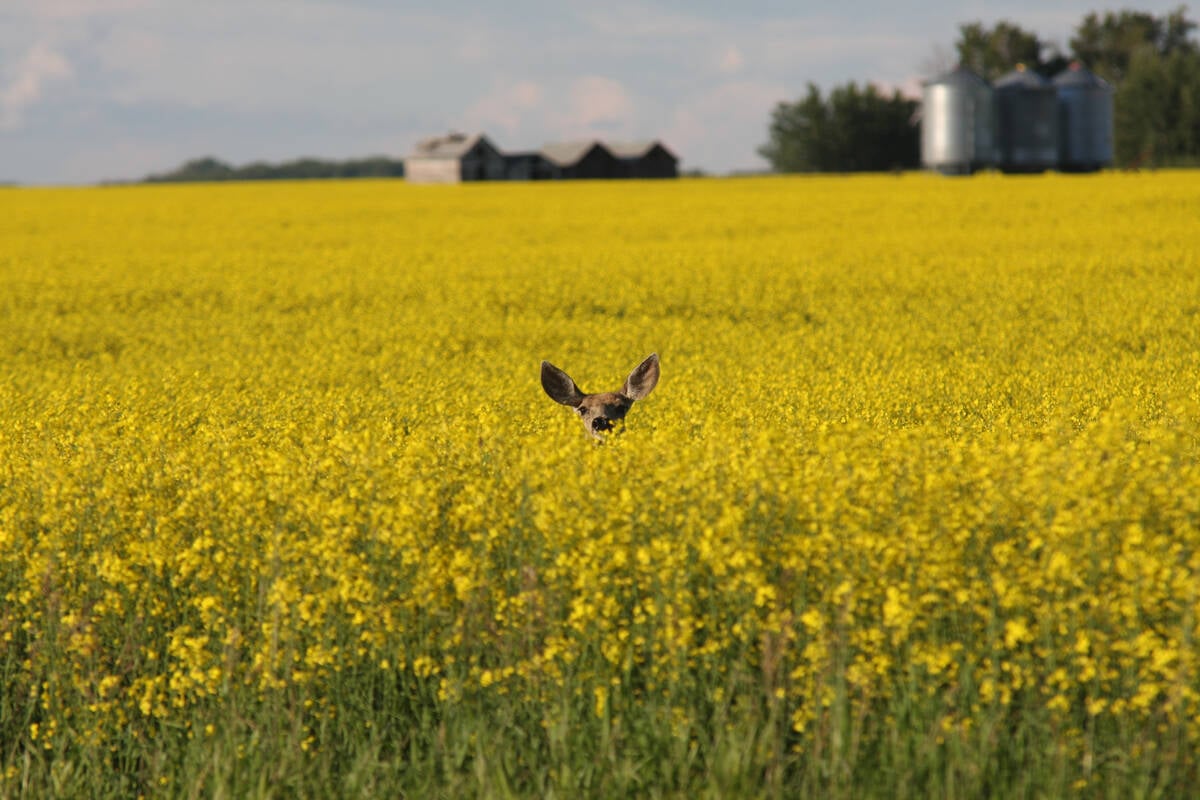Canada has restricted poultry imports from several states; importing broiler hatching eggs has become a ‘logistic headache’
An outbreak of avian influenza continued its spread last week with new cases reported in Canada and the United States.
Canadian officials reported the disease’s appearance April 6 on a turkey farm near Woodstock, Ont. It was later confirmed to be the same deadly H5N2 strain that appeared in British Columbia in December and across several U.S. states in recent months, disrupting trade and challenging the flow of hatching eggs and breeders into Western Canada.
“The more outbreaks there are, the more strain it puts on human re-sources and so we’ve been working through that,” said Robin Horel, president of the Canadian Poultry and Egg Processors Council.
Read Also

Drones now used to assess wildlife crop damage in Saskatchewan
Wildlife damage in Saskatchewan crops is now assessed by drones and artificial intelligence.
“Currently, we have some states that we can’t trans-ship through at all, which is causing us some grief in Western Canada.”
In Minnesota, the appearance of H5N2 in a flock of 310,000 turkeys last week was the ninth in a matter of weeks.
It’s one of several states from which Canada has restricted poultry imports. The list also includes Montana, South Dakota, Kansas, Arkansas, Missouri, Minnesota, California, Idaho, Oregon and Washington, following cases in those jurisdictions.
The appearance of the disease in Arkansas last month drew concern from Canadian producers. The state is a key source of broiler hatching eggs and breeders.
As many as 20 percent of the broiler hatching eggs in the country arrive from the United States.
“To my knowledge, and I think I would know if there were, there have been no supply interruptions,” said Horel.
“We’ve been able to work our way through that. It’s just been a bit more of a logistics headache, that’s all.”
Horel said the control zone in Arkansas was quickly shrunk to two counties, allowing business to resume, but subsequent restrictions on northern U.S. states are creating a logistical problem for western Canadian operations.
“You’re starting to get a bit of a roadblock there to try to get to Sask-atchewan or Manitoba,” said Horel.
He said products are being rerouted to come into Canada from Ontario or B.C. and transported to the prairie provinces.
Wayne Hiltz, executive director of Manitoba Chicken Producers, said shipments were coming in from Ontario before the outbreak in that province. Speaking late last week, he said those deliveries have stopped until the Ontario control zone shrinks.
“This week we’ve started to get a couple shortages on some placements because of it,” he said.
“This is the first effect from the broiler side of it for us.”
The size of broiler hatching egg shipments would make flying them too costly, said Horel, but it could be an option for breeder supply.
Hiltz said there have been discussions about chartering planes.
“In our province, we generally don’t import a lot of day-old chicks, but that has become an option that some of the hatcheries are considering as a way of managing the issues on the import eggs,” he said.
“Hatcheries are definitely having to commit some significant resources to this issue.”
More than 10,000 birds died on the infected farm in Ontario, and eight nearby farms have been quarantined to prevent potential spread of the disease.
The Canadian Food Inspection Agency reported that Hong Kong, Uruguay, Japan and Taiwan placed trade restrictions on some Canadian poultry products.
“It will, as it did in B.C., undoubtedly result in restrictions,” said Horel.
“Some countries we know from history will restrict all of the entire country, which makes no sense, but that’s what they’ll do. Some will restrict a smaller zone. Some will restrict a province.… We have to make sure we’ve protected the poultry, for sure, from the disease, but then over and above that we’d like commerce to carry on if at all possible. The smaller the zone the better.”
Horel said April 9 that U.S. and European Union officials had yet to announce trade restrictions.
“The two-way trade is big with the U.S, the EU,” he said.
“Some of the bigger ones are pending. Those will be the ones that are more important.”
The U.S. Department of Agriculture believes migratory ducks are responsible for spreading this particular strain of the disease.














